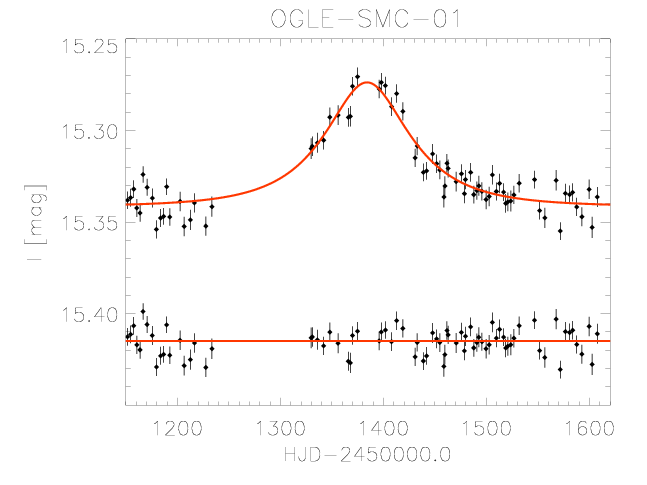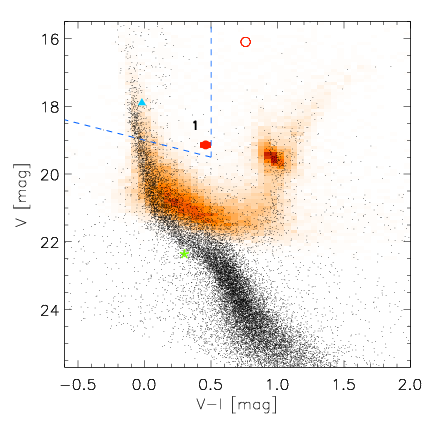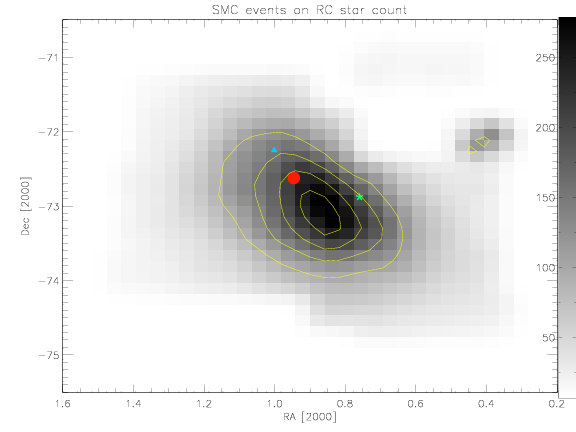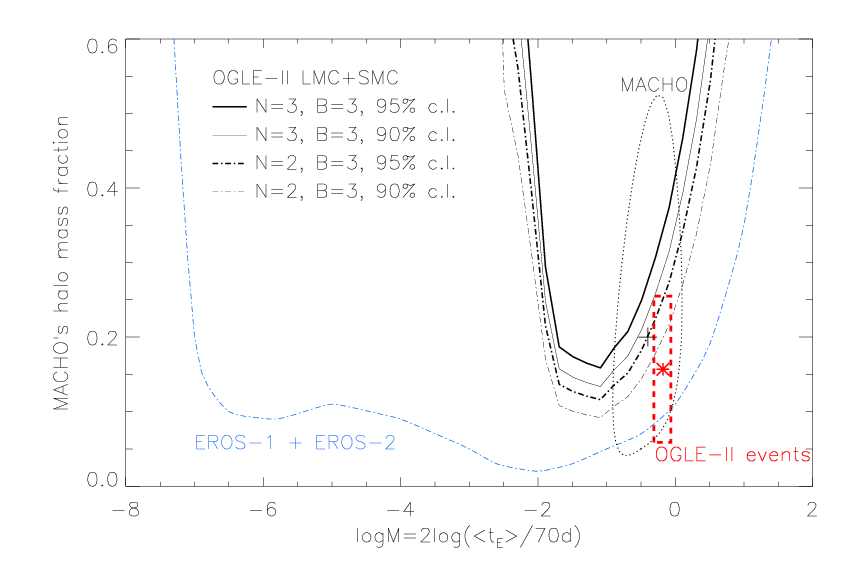The OGLE View of Microlensing towards the Magellanic Clouds
II. OGLE-II SMC Data.
The original and primary goal of the OGLE project is to provide the evidence that can either prove or falsify the hypothesis that dark matter in the Galactic halo can clump into stellar-mass compact objects. If such objects existed, they would act as lenses to external sources in the Magellanic Clouds, giving rise to an observable effect of microlensing.
In the second part of the series of studies with OGLE data we present the results of our search for microlensing events in the data from the second phase of the OGLE survey (1996-2000) towards the Small Magellanic Cloud (SMC).
We found only one microlensing event candidate, dubbed OGLE-SMC-01, however its poor quality light curve limited our discussion on the exact distance to the lensing object.

Figure shows the event along with the best microlensing model. The event was detected on a very bright star, however it clearly exhibited a severe blending, confirmed also with the astrometry of the signal on subtracted images.

Color-magnitude diagram of the SMC_SC1 field from the OGLE (red background) and HST (black dots). Source star of the event OGLE-SMC-01 is marked with the red dot. Location in the Blue Bumper exclusion region (blue dashed lines) makes this event ambiguous. Open circle marks the position of the blended object, on which the event was detected. Also marked are two MACHO events detected in 1997 (blue triangle) and 1998 (green star - it was a binary lens).

Positions of the OGLE and MACHO events on the Red Clump density map from OGLE-III. Central position of the OGLE-II event hints it is caused by self-lensing, i.e. lensing of SMC background stars by SMC foreground stars.
Given a single event, taking the blending (crowding of stars) into account for the detection efficiency simulations, and deriving the HST-corrected number of monitored stars, the microlensing optical depth is tau=(1.55±1.55)×10e-7. This result is consistent with the expected SMC self-lensing signal, with no need of introducing dark matter microlenses. Rejecting the unconvincing event leads to the upper limit on the fraction of dark matter in the form of MACHOs to f<20% for deflectors' masses around 0.4 MSun and f<11% for masses between 0.003 and 0.2 MSun (95 per cent confidence limit). Our result indicates that the Milky Way's dark matter is unlikely to be clumpy and form compact objects in the sub-solar-mass range.

Mass fraction in compact dark halo objects as a function of the mass of the lensing objects for combined LMC and SMC results from OGLE-II. The red box with a star shows the hypothetical value for the two LMC and one SMC events if they were caused by halo dark lenses. Solid lines show upper limits assuming all OGLE-II events are not due to MACHOs and the expected self-lensing background yields 3 events. Black dot-dashed lines show the same upper limit, but excluding the ambiguous SMC event. Also shown are the results of the MACHO collaboration (dotted line) and the upper limit derived by the EROS group (dot-dashed blue line).
The data, including light curve of event and efficiency curves, is available in
the OGLE Internet archive or
here.
PLEASE cite the following paper when using the data or referring to
these OGLE results:
Wyrzykowski et al., 2010,
MNRAS, in press
(astro-ph/1004.5247)
Any comments about the results, the data and the form of their presentation are welcome.
Send your messages to this address.
 back
back